Until only recently I would joke that when Hollywood produced a handful of big budget films each year about the future, they were nearly always foreboding—dire warnings of technology-driven dystopias, toxic zombie apocalypses, world domination at the hands of cyber criminals and threats of global extinction (including, yes, pandemics), all part of an endless variety of existential threats to human existence—and almost never optimistic.
What a difference a year makes. In likely the most tumultuous moment in movie history and with a nebulous future outlook that might charitably be called cautiously uncertain, such dystopian movie warnings suddenly seem more like self-fulfilling, verité documentaries than cautionary science fiction parables.

If pressed to categorize the past two years by movie genre, one might be tempted to call the current moment a cliffhanger, akin to the silent serials of the early 20th Century. But those cliffhangers did one thing successfully, and differently, than today’s theatricals—they kept audience members coming back, even in the midst of The Great Depression.
By contrast, unlike those throwback nickelodeons with their 5-cent escapes from the harsh realities outside, today’s depressed theatrical movie industry is, for many, unable to provide similar respite from COVID-era anxieties due to the very public and ongoing demonization of theaters as potential super-spreader havens. While large swaths of the public are comfortable in department stores, eateries and “small groups,” many are unwilling to venture into the socially distanced multiplex citing concerns of ventilation and, well, other moviegoers.
Lockdowns followed by tepid audiences have, in record time, led to the dramatic contraction of major chains like AMC and Cinemark, closed specialty venues such as Arclight and Alamo Drafthouse, shuttered historic movie houses like Hollywood’s famed Cinerama Dome and caused mom and pop single screens nationwide to go dark.
A year ago there was cautious optimism that the audience would return once theaters were fully open (they are) and had administered new safety protocols like ventilation and sanitation upgrades (many did). In my twenty-odd national film discussion groups the refrain was universal—no one wanted to see theaters disappear and all planned to return; that seeing films at home on streaming was “not the same” and the threat of the potential loss of a great American communal experience was simply unacceptable.
Flash forward a year and change later and what I’m now hearing from most Boomers (and certainly for Gen Z and Millennials this was a reality far earlier) is how much they love their new fancy new soundbar that accompanies the 70” flatscreen upgrade which is, to some, “just as good” as being in a theater. The velocity with which such technological comforts have been adopted—most are now up to speed with apps and platforms—combined with the undeniable thrill of seeing first-run films at home quickly (and sometimes simultaneously), has taken very firm, very fast root. When I recommend a film to a group audience today, the first question is no longer, “Is it playing in the city? Or do I have to drive to The Glen?” but rather “On Demand? Hulu? $5 or $20?”
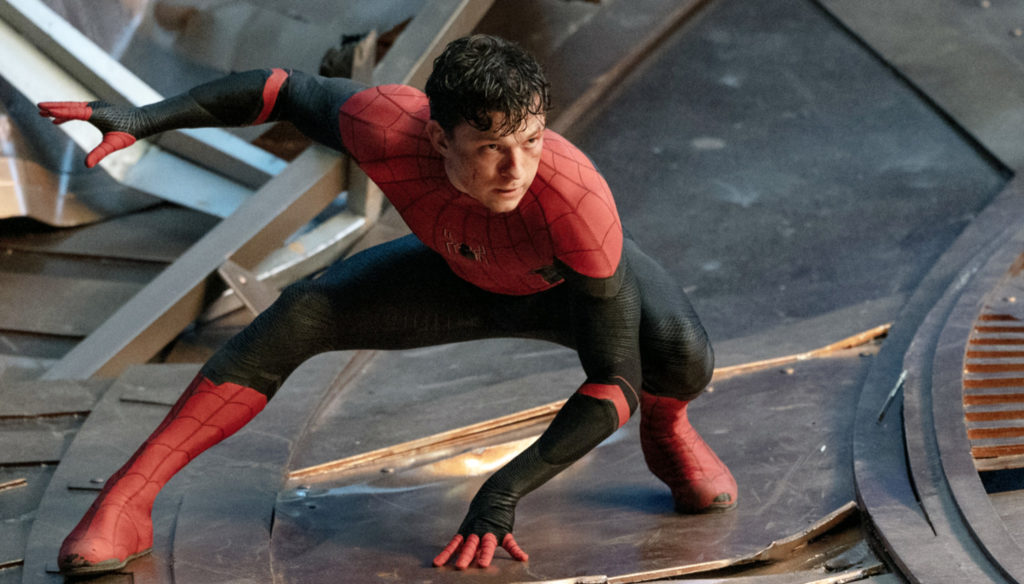
No one truly knows what all of this means. But if we look at the year’s box office receipts and consider the “four quadrants” of filmgoers (male/female, over/under 25), the majority of pictures released in 2021 are not capturing a wide swath of returning cineastes. The types of pictures that are succeeding are, as expected, those with built-in audiences that skew younger, and those films are Spiderman: No Way Home ($260m opening weekend; second best of all time), Shang-Chi: The Legend of the Ten Rings ($225m), Venom: Let There Be Carnage ($212m), Black Widow ($183.6m), F9: The Fast Saga ($173m), Eternals ($161m), No Time to Die ($160.5m), A Quiet Place II ($160m). You get the idea, and just behind those were Halloween Kills, Dune, Jungle Cruise, Ghostbusters: Afterlife and Godzilla vs. Kong. Rinse, repeat.
One would have to look down to the 27th most popular film this year to find the (only) picture aimed at grown-ups which has captured a reasonable percentage of adult filmgoers and been heralded as the picture to get “older” viewers back into theaters: Ridley Scott’s House of Gucci, a superbly marketed bullseye that received admittedly mixed reviews but had a big, north star guiding it—the one and only Lady Gaga, whom we will get to in a moment—and is currently climbing north of a $45m domestic gross (and $110m globally).
Other adult-themed pictures that hoped for similar financials from the same audience quadrants failed. Tom McCarthy’s thoughtful Stillwater, for example, premiering at Cannes to a standing ovation, went belly up with final domestic gross of $14.5m. Will Smith’s inspiring King Richard currently sits right behind Stillwater, despite glowing notices and a healthy Oscar campaign in play. Ridley Scott’s fact-based medieval drama The Last Duel garnered a mere $10.8m in tickets sold. But perhaps the most disappointing box office for an early awards season hopeful—a dismal $2.4 million—was tallied for the year’s 95th ranked film, Jessica Chastain’s Tammy Faye Bakker biopic The Eyes of Tammy Faye, a movie very few laid eyes upon and one with perhaps the year’s best female performance.

Even Steven Spielberg’s celebrated West Side Story, financed for between $100-$130m depending upon whom you ask, stumbled badly on its opening weekend despite glowing reviews and serious Oscar hopes. With a $10.2m domestic take over three days, the picture went from awards darling and “better than the original” on Thursday to “major miscalculation” and “Boomer nostalgia” (for Boomers who largely didn’t show up) by Sunday’s box office report, lodging a direct critique in some industry corners over whether Spielberg had lost the Midas touch, his populist finger no longer on the zeitgeist, especially that which speaks to younger viewers.
This above is simply a snapshot of what is working and failing during one year in nearly a century of filmmaking and exhibition, but one that delivers an unmistakable commercial message to studios that financing original, adult-oriented dramas is no longer profitable for theatrical houses and that production budgets must likely be scaled back, and that the sorts of projects that get greenlit should be carefully evaluated for their box office potential, usually based on what has “worked” in the past. That means sequels, franchise films with built-in audiences and rabid social fan bases, the kinds of global exports that will work in any corner of the world and usually rely on behemoth special effects—such is the future of theatrical exhibition, driven by these films and audiences.
In this landscape, sophisticated and discerning moviegoing audiences will be largely out of luck. Consequently, there will be fewer adult-themed films playing theatrically and more on the home market for those who wish never to return to theaters—instead of voting with their dollars at the ticket counter and concessions they will vote with Amazon clicks, Hulu queues and microwave popcorn.
Yet even in this midst of such a game-changing year, 2021 saw a number of terrific films that on sheer quality were able to punch through the din of escalating industry noise. Many had little to non-existent theatrical runs. Some were Covid-shelved in 2020 before being unceremoniously dumped onto streaming. Others were made for microbudgets and made even less at the box office.
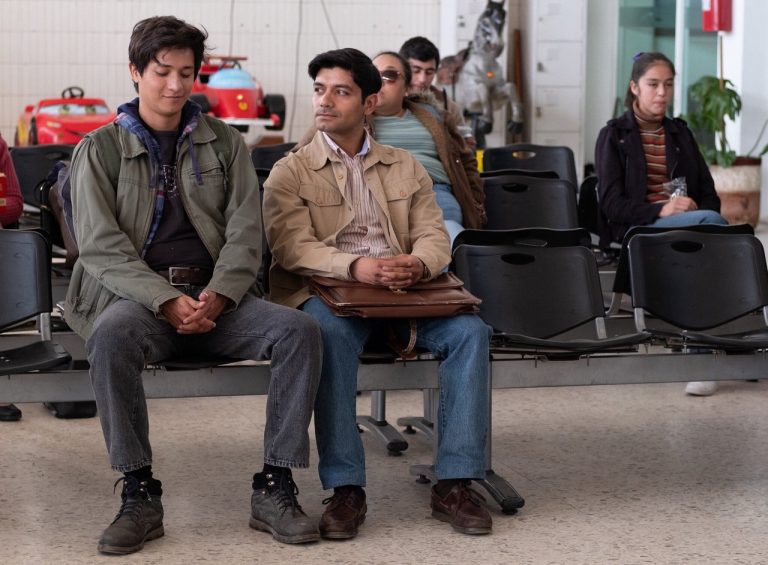
There was no finer hidden gem this year than documentarian Heidi Ewing’s narrative-docu hybrid, I Carry You With Me, 2020 Sundance prize winner and the year’s best love story, charting twenty-five years in the lives of two very different men—one a working-class dishwasher who dreams of becoming a chef, the other a college teaching assistant from a higher class—who meet, fall in love and flee the attitudes of provincial Mexico circa early 90s for the mean streets of Manhattan, in pursuit of the American Dream, which can sometimes happen very slowly. Yet instead of liberation they find themselves trapped in a very different prison as successful entrepreneurs caught in a painful immigration quagmire. In a most original approach combining footage of the real-life men and their fictional counterparts, Ewing’s invention pierced the heart as few films this year did.
Actress turned filmmaker Rebecca Hall’s writing and directing debut Passing, based on the 1929 Nella Larson novel about racial passing in the Harlem Renaissance in examining two very different African American women—one passing for white with a Caucasian husband, the other, an upper middle-class wife in Harlem, seemingly secure in her racial identity. In an oblique film shot in B&W in the old studio Academy ratio, Hall posited intriguing notions of identity, culture, community and friendship, most of which had no definitive answers. Stars Ruth Negga and Tessa Thompson were exceptional and amongst the year’s best.
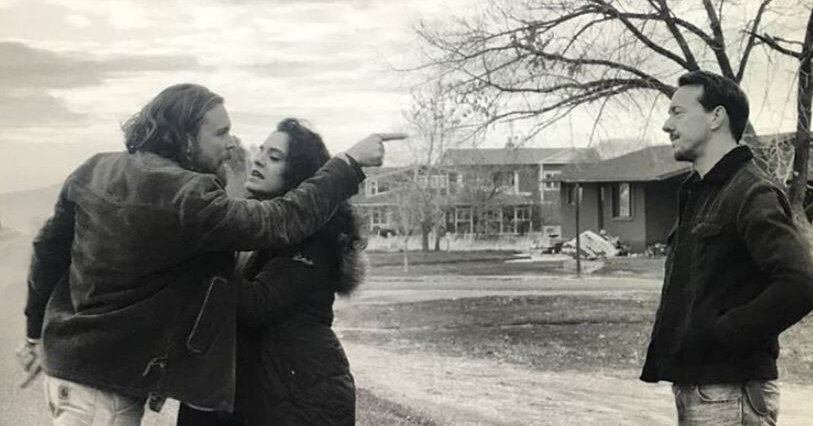
What happens when an estranged husband is committed to working through marital problems and his wife really just wants out? The tiny but powerful The Killing of Two Lovers, about the implosion of a young marriage in a tiny Utah town, was as “pure” as small independent pictures come, a close-up and unsentimental examination of discord told from the husband’s point of view. Star Clayne Crawford, who should be in the Oscar conversation, is the sensitive day laborer whose wife has moved on. With three kids and her new boyfriend in the middle, the emotional acuity in Robert Machoian’s austere film produced some of the year’s most incisive drama.
There were two films this year where actors were required to spend significant screen time alone, sorting through emotional traumas in close-up. In Pig (more on this below), Nicolas Cage won dramatic redemption after a string of cult movie performances by playing an emotionally wounded former chef living as a grizzled mountain man in the Pacific Northwest. When his pet pig is stolen, he must re-enter society and face a personal reckoning. And Passing director Rebecca Hall was superb in the summer thriller The Night House, a shivery ghost story in the classic tradition, as a young widow whose recently deceased architect husband was up to something mysterious. Hall, with precision and focus, navigates psychological trauma and supernatural phenomena expertly in a film that asks two big questions—how well you can ever really know a partner and is there anything that comes after death? The film’s answers to both were chilling.
The limits of friendship were tested in the wildly raucous Zola, based on a real-life story told in a Twitter thread (that ultimately sparked a Hollywood bidding war), about two young exotic dancers from Detroit who head down to Florida for a big fantasy payday in a supposedly lucrative club. In reality the women are promptly ensnared in a too-bizarre-to-be-fiction odyssey of escorting, trafficking and outsmarting a comically menacing pimp, played by the great Colman Domingo in one of the year’s most memorable supporting performances. Speed, humor and thoughtful meditations on Black and white, Zola was made with flair by director Janicza Bravo, her eye turned toward liberation and away from exploitation in one of the year’s surprising treats.

When we experience life changes, can we ever truly escape who we are inside, how we think and the decisions that we make? In Stillwater, a career best Matt Damon is an Oklahoma roughneck who relocates to Marseilles in an effort to exonerate his daughter, Abigail Breslin, from a murder conviction. Through this cross-cultural immersion, filmmaker Tom McCarthy sets an ambitious agenda that poses a number of potent questions. Can trauma in a family ever be fully healed? How are Americans in 2021 perceived abroad? Does America still have “moral authority” in the world? The picture suggests a tug-of-war not just between cultures, but between liberal and conservative ideologies, asking us to consider—not dismiss—Damon’s Bill Baker, a “red stater” who surprises himself, and us, in his evolutionary capacity, becoming an unlikely new person in a new place, open to the charms of a liberal single mother played to perfection by Camille Cottin.
New Zealand filmmaking auteur Jane Campion’s muscular, diamond hard The Power of the Dog, based on the novel by Thomas Savage, transports us to the American west of 1925 for a psychological chamber piece in which two stunted Montana brothers, Phil (Benedict Cumberbatch) and George (Jesse Plemons) Burbank, own a successful cattle ranch, their lives insulated in a man’s world of cowboy ethos. Phil is all swagger, a rough-hewn former Yale aesthete turned rancher filled with poisonous aggression upon the arrival of Rose (Kirsten Dunst), a widow that civilized George ultimately marries. Rose’s recessive, soft spoken son (Kodi Smit McPhee) complicates matters in a film about repressed identity, lost love and diabolical revenge. As the threatened, self-protected intimidator, Cumberbatch gives a titanically powerful performance, deconstructed to naked vulnerability.
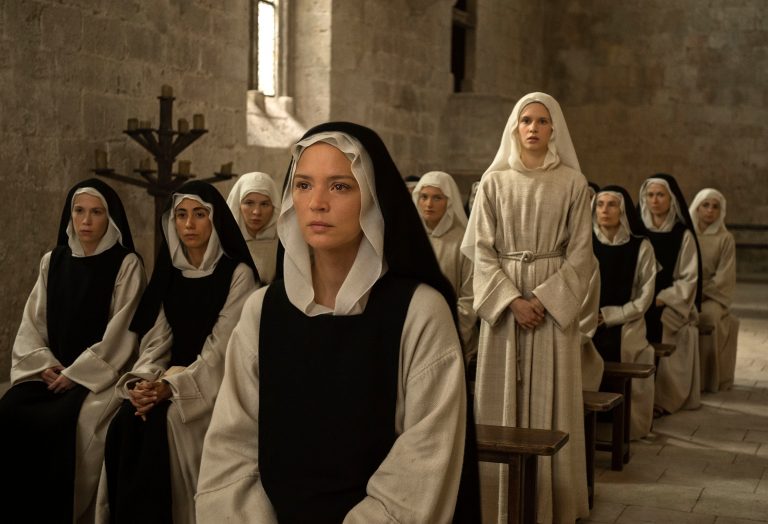
A modern entry into a genre once called “nunsploitation,” Paul Verhoeven’s gripping, beautifully made Benedetta, the true story of a 17th century Italian novice nun (Virginie Efira) called either by God, the devil or her own libidinous lesbianism (perhaps all three), was a smashing piece of entertainment. Directed by one of the movies’ great provocateurs and awash in sex, sin and stigmatas across a plague-infested Europe, Benedetta features an exciting turn from Charlotte Rampling as a dethroned Reverend Mother determined to reveal the blasphemies of her nubile successor. Benedetta, a lurid, arthouse fever dream, is sensual and spiritual in equal measure and a frame-to-frame joy to watch.
Cannes Palm D’or winner Titane, a patently ridiculous film adored in some corners but which left me slightly befuddled, found visionary French filmmaker Julia Ducournau taking the festival’s top prize for her shock cinema tale of a hardcore exotic dancer turned misanthropic female serial killer who appropriates the identity of a long-missing boy to infiltrate the home of the boy’s grieving father. Still with me? The pair develops a perverse symbiosis, equal parts David Lynch and David Cronenberg, and Titane—which featured sexual obsession and communion with an automobile—was daring body horror with psychological pretension in spades. A most unusual experience featuring a battery of fascinating imagery and a chiller of a birth scene guaranteed to change whatever opinion you may currently hold about…motor oil. You can’t say that about any other film this year.

Italian filmmaker Paolo Sorrentino, whose magnificent The Great Beauty, a Fellini-esque love letter to Rome’s social and cultural denizens, won the 2014 International Feature Film Oscar, followed his masterpiece with this year’s lesser The Hand of God, a largely aimless recollection of his Napoli youth including a formative tragedy that birthed his artistic identity. Sorrentino had all of the elements for a successful picture—intoxicating Italian seaside, talented cast, superb production values—but personal, eccentric memories and nostalgia alone do not make for drama. Charting his coming-of-age as a young filmmaker (he is played by the overpraised but less-than-expressive young actor Filippo Scotti), Sorrentino’s rambling picture has surprisingly little new to say about life, art and family that hasn’t been said before and better. Watching The Hand of God is like being held captive to an acquaintance’s reminiscence of cousins, uncles and extended family—stories you’ve usually heard before—for more than two tedious hours. Memoirs may be vivid to their storytellers, but there is, frankly, a limit.
The Card Counter, written and directed by the legendary Paul Schrader, grappled with guilt over military torture and inhuman interrogation tactics in the form of an ex-con soldier now living anonymously as a poker player and card counter in Atlantic City and along the Eastern Seaboard hotel casinos. Played by a career best Oscar Isaac, who upon meeting a bitter young man bent (Tye Sheridan) on revenge, seizes the opportunity to mentor him instead toward forgiveness. Sin, saviors, redemption and the dark night of the soul (Schrader’s specialty) inform The Card Counter, and an appealing Tiffany Haddish shows up to provide some low-key romantic chemistry. One of the year’s best films.

In Drive My Car, Japanese filmmaker Ryusuke Hamaguchi’s Cannes-winning examination of loss, art and the potential for rebirth, a renowned stage actor married to a television writer suffers a shock that leaves him emotionally paralyzed. Two years later while rehearsing a Hiroshima-set revival of Uncle Vanya, he meets a young female chauffeur and their relationship, and its connection to both his beloved car and Chekov’s drama, creates an unlikely bond enabling both wounded souls to heal. Expansive, quiet and contemplative over three measured hours, Hamaguchi’s decorated drama will not be for all audiences but has an undeniably hypnotic power.
Pablo Larrain’s Spencer, like his 2016 Jackie, turned a beloved cultural and political icon in a conceptual experiment. As Princess Diana, Kristen Stewart’s approximation of her subject’s manner, voice and carriage is arresting. While the picture is often simplistic and too precious, difficult to engage with but respectably mounted, Stewart’s imagination in crafting Diana makes for a vivid interior life of a woman in a Herculean struggle to reclaim, and preserve, a sense of self amidst suffocating tradition. Fictional Spencer, set during Christmas weekend at Sandringham House, is not a typical biopic and is often overly abstract, laden in metaphor and cool to a fault, offering little to Diana’s story that is not already known. Stewart’s portrait transcends Larrain’s directorial fussiness.
In actress Maggie Gyllenhaal’s writing and directing debut The Lost Daughter, Olivia Colman is a Cambridge comparative lit professor alone on a seaside Greek holiday seeking privacy, dismayed at the arrival of a boisterous Greek-American family. Slowly fascinated with the family’s young mother (Dakota Johnson), she commits an inexplicable act. The picture starts strong but tests its audience with a lead character that takes far too long to share her mysteries—which when revealed are not all that mysterious or profound. While Jessie Buckley is terrific as Colman’s younger self, the narrative digressions to the past are a distraction, and our patience with Colman’s oblique character wears thin.
Mass, the definition of extraordinary writing and performing in a microbudget actors’ exercise, involves a meeting between two sets of parents—those of a school shooter and those of one of his victims. In a church basement safe zone of sorts, a revelatory Martha Plimpton and Jason Isaacs desperately search for answers to their son’s murder from Ann Dowd and Reed Birney, whose son perpetrated the crime. The blunt force impact of Mass is, at times, emotionally and psychologically terrifying, giving each set of aggrieved parents the full weight of the tragedy on his and her shoulders. “Could we have done more to identify and deal with our son’s mental illness?” “Didn’t you see the signs?” These, and other potent questions are answered in detail. Written and directed by first-timer Fran Kranz, the rawness of the single-room, claustrophobic seventy minutes at the center of the film has a shattering, elemental power in its portrait of four traumatized souls looking for out-of-reach answers to assuage pain. Brave and insightful, Mass is the year’s best ensemble.
In the lacerating wartime thriller Quo Vadis, Aida?, released in March of 2021 and nominated for the International Feature Film Oscar earlier this year, filmmaker Jasmila Zbanic tells a story so powerful and painful that the only reaction can be “How could this have happened? And why does it continue to?” Starring world-class Serbian actress Jasna Duricic as a Srebenica translator working with the UN during the tense days of Srebenica’s invasion by General Ratko Mladic, which led to murders of more than 8,000 Bosnian Muslims, Durici’s Aida tries vainly to save the lives of her husband and sons in the “safe zone” of a UN compound. Zbanic has crafted a devastating epic of both personal and large-scale chaos. Quo Vadis, Aida? is a ticking-clock thriller, a political indictment and a haunted, mournful look at UN and international apathy that led to mass, and very recent, casualties.
In Pig, Nicolas Cage redeems his latter career slide into headlining B-movies (all of which he has sold with professionalism and signature imagination) in the role of a former Portland chef turned recluse in the deep forests of the Pacific Northwest, where he lives with his trusty, truffle-hunting pet pig. When the pig is stolen, he teams up with the terrific Alex Wolff to track down the culprit. Surprisingly moving, Cage eschews eccentricity, gradually revealing an emotionally crippled character who must re-enter the world of nouveau cuisine to solve the mystery and heal his demons. Quiet, contemplative, superb.

And in House of Gucci, a refreshingly adult and sophisticated rumination on power, manipulation and murder in the ultimate family business, eighty-four-year-old Ridley Scott (delivering his second film this year behind the very good The Last Duel) took the sensational 1995 execution of family heir Mauricio Gucci and turned it into a portrait of social class, unscrupulous business machinations, adultery and vengeance. As played by the indelible, natural born movie star Lady Gaga, working-class Italian climber Patrizia Reggiani is equal parts ambition, ruthlessness, supportive spouse and dangerously spurned wife. In a sensational, bring-down-the-house movie star performance, Scott and Gaga fashion a surprisingly empathetic portrait of a woman done wrong—who then did something terribly wrong herself. A superb Al Pacino, wily Jared Leto, steely Jeremy Irons and straight-man Adam Driver round out the family shenanigans in a classy piece of commercial entertainment. Don’t listen to anyone who calls House of Gucci camp—a too easy dismissal for the muscular drama.
Musicals were back in a bigger way than ever, even if audiences weren’t exactly dancing in the aisles (or snapping their fingers into clicks). The year’s best offering was the vibrant In the Heights, which fell victim to a backlash about its casting, but the unimpeachable and exuberant Lin-Manuel Miranda property featured a breakout performance from Hamilton alum Anthony Ramos and wildly energetic look at gentrification and the immigrant experience in Manhattan’s Washington Heights. Crazy Rich Asians director John M. Chu mounted the picture with a visual showmanship unmatched in musicals, or perhaps other commercial films, this year.
Dear Evan Hansen, the most unfairly maligned film of the year, was nearly as affecting as its Broadway counterpart, Tony-winner Ben Platt giving his all (which was considerable) as an anxiety-ridden teenage outcast who reluctantly participates in a lie that gives him popularity, family and a purpose. Misguided critics failed, willfully, to consider Platt’s Evan as a damaged person making questionable decisions (as most teens do) with a depressed and deeply sad mindset, gleefully bringing down fire-and-brimstone judgment on the character’s actions. Never mind about the quality of his singing, emoting and the terrific supporting cast, including a memorable Julianne Moore as his beleaguered single mother.
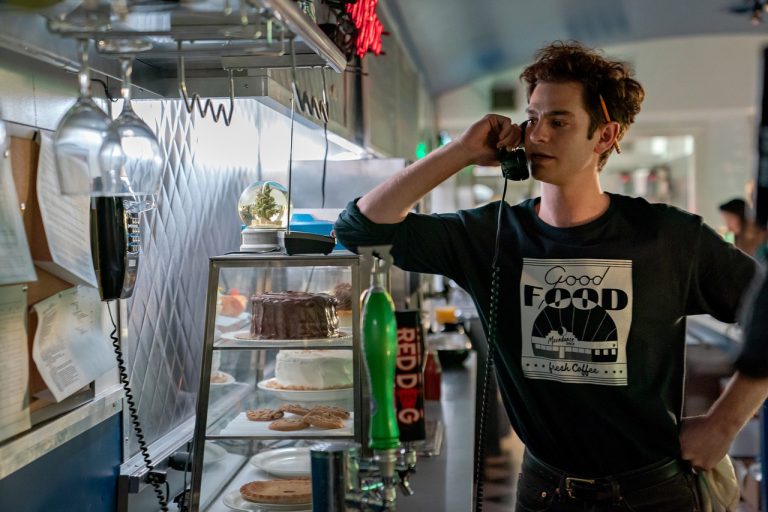
And then there was Tick, Tick..Boom!, the late Jonathan Larson’s autobiographical look at what it means to be a struggling artist in a metropolis with Tony winner Andrew Garfield as Larson himself, torn between the tensions of pursuing his passion for playwriting versus selling out for stability. Set at the height of the AIDS epidemic in New York City, this edgy downtown examination of the artistic life–creation, hopes, dreams and disappointments with lovers and friends on the periphery–is perhaps one of the best ever on how life influences art and what it takes to persevere when all doors seem to close. Garfield, electric in every moment and emotions on his sleeve, was as good as anyone in a picture this year.
Enter West Side Story, which unlike the other contemporary musicals this year was a throwback to 1957, a time of rival gang wars and doomed love at first sight—we all know the story—given polish, pizazz and color by Steven Spielberg. Unfortunately, very few showed up. While younger moviegoers had little interest and few reference points (or known personalities in the cast), Baby Boomers (largely staying out of theaters) adopted a take-it-or-leave-it attitude. For some, the 1961 version will never be equaled so “Why bother?” Those who went largely loved Spielberg’s new vision—but not enough ventured to theaters. As a musical, it was still West Side Story, with the most famous music in all of American musical theater, timeless yet decidedly a product of its time. While attempts to “update” have been made in Tony Kushner’s screenplay, the picture still plays as stuck-in-time nostalgia, all dressed up and perfectly entertaining but with little reason for being. Legend Rita Moreno returned in a new role that appropriated Somewhere, but the real revelation was Ariana Debose as a fiery, intelligent Anita.
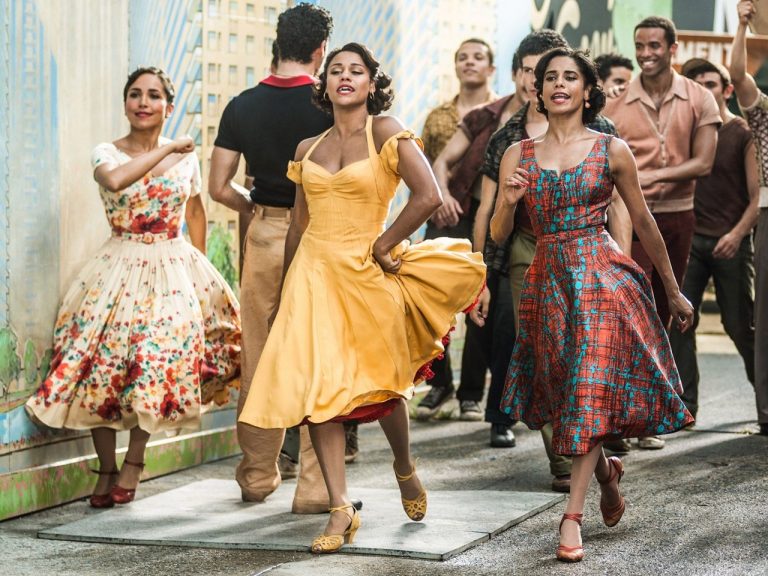
What does this tally of 2021 notables tell us, if anything? That there are great pictures coming out of both America and the rest of the world, and that movie artists are finding ways to make the most out of a challenging moment. It also tells us unequivocally that while adult-level movies will find homes on fewer multiplex screens due to lackluster theatrical attendance, they will be ushered into, and welcomed, far more quickly onto our home screens. For many pictures, I suspect such accessibility will be a boon to visibility; for others, the experience will certainly diminish.
As with all the best Hollywood cliffhangers, the sequel to 2021 has yet to be written—even if it’s already been pitched.
This article also appears at ClassicChicago.com.

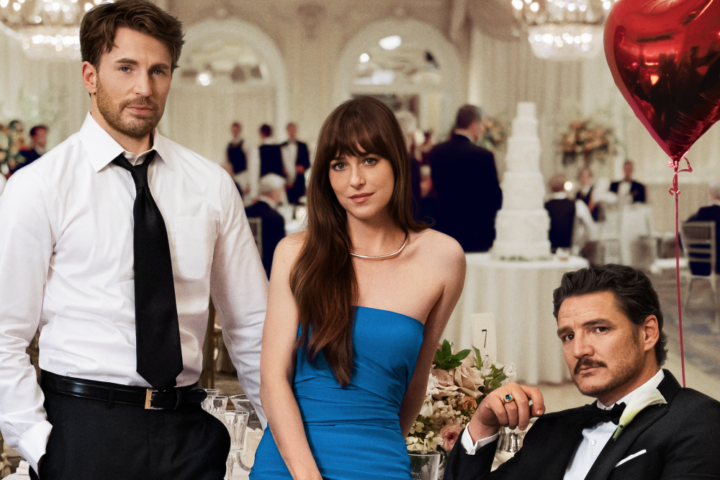

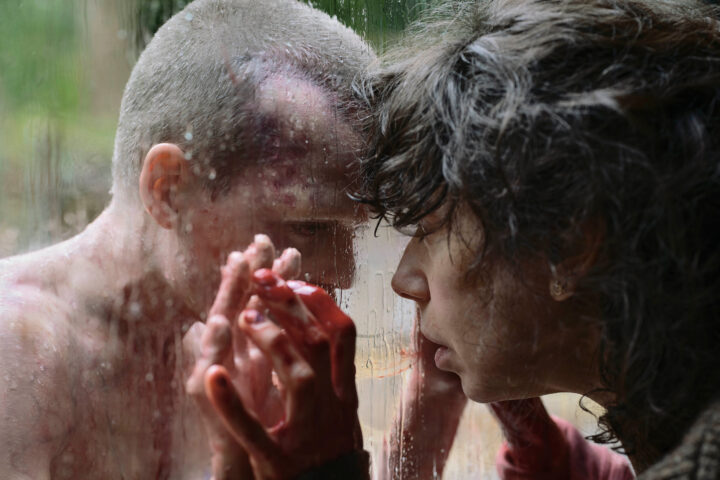
Good to see you are still covering the movie beat, Lee. I think it’s an even bigger question than “Can theaters make money on non-tentpole pictures?” (Or films for adults, as you term them, though I think there is a lack of genre variety in theaters as well). Arguably, high-end series television is not only better written, but is often more truly cinematic these days than many CGI-intensive spectacles. I think the model of film criticism you and I came up with — prioritizing theatrical releases and seeing TV as distinctly different than “cinema” — is woefully outdated. Don’t get me wrong, I will always prefer seeing a movie in a theater and I’m still a rare bird who does so regularly. But the idea that professional film critics need to see the latest episodic Marvel assembly line product but do not need to see something like “Babylon Berlin,” “We Own This City” or even a half-hour show like “Barry” doesn’t make sense to me, especially as theatrical exhibition hasn’t defined what a “movie” is since at least the DVD era. Creatively, those walls separating TV and movies are down, but our cultural conversation hasn’t kept up with the change.